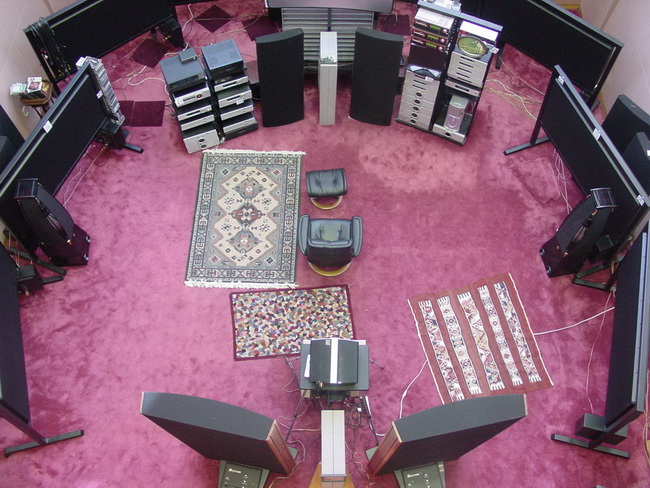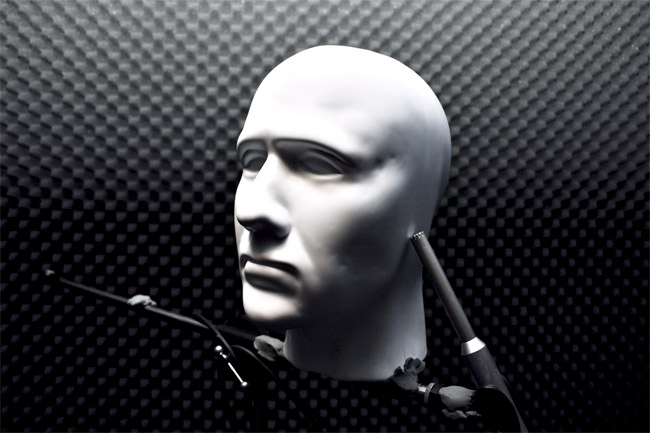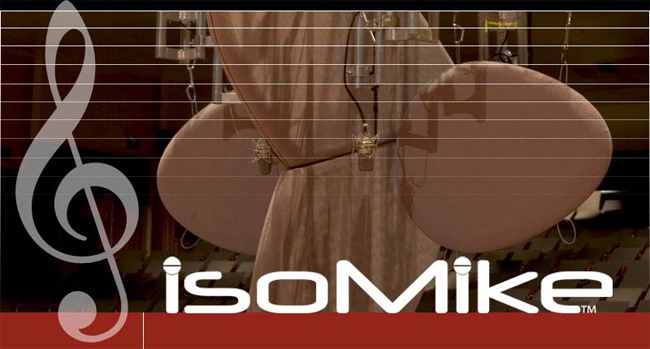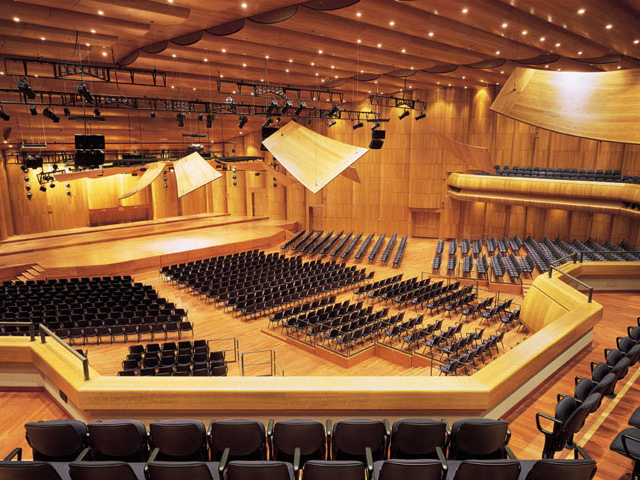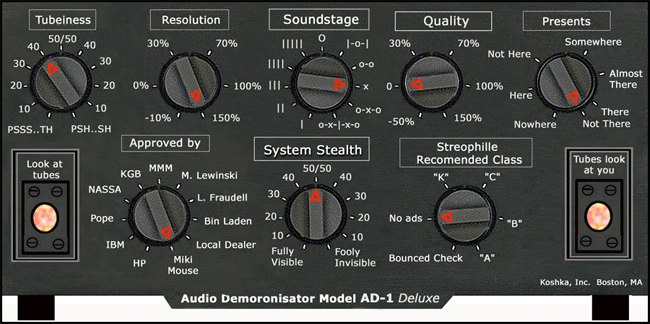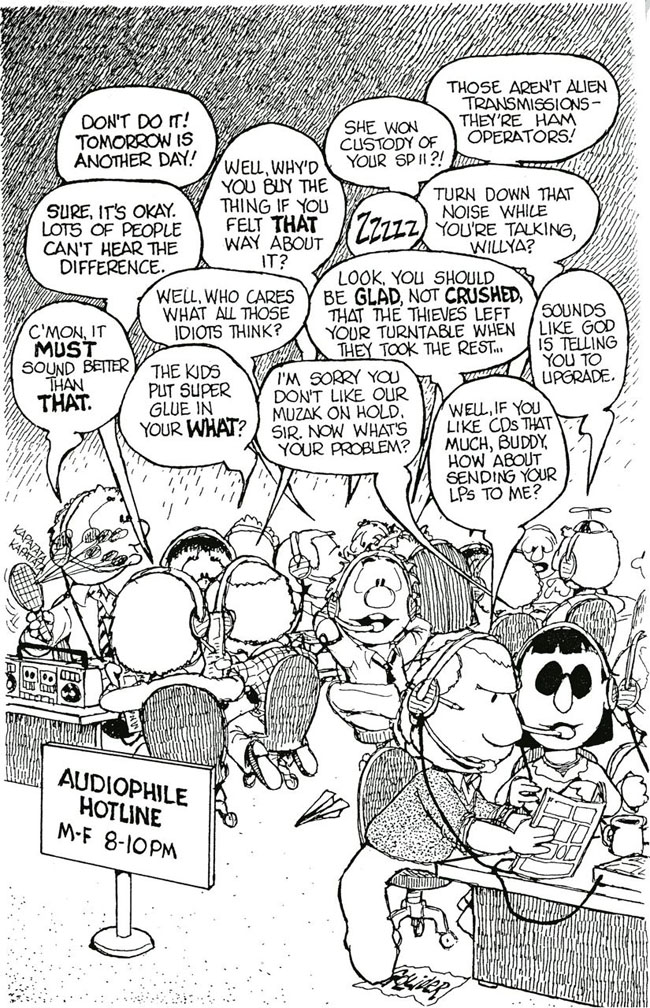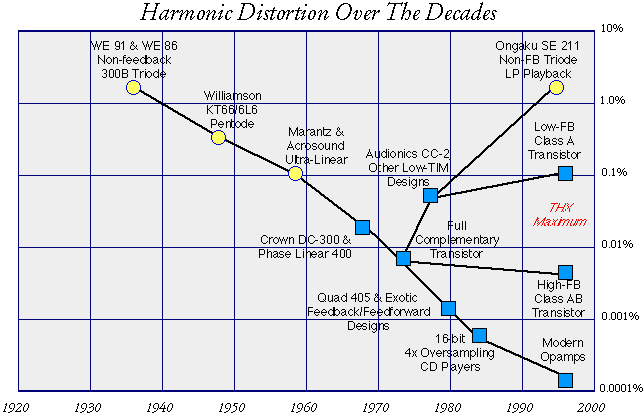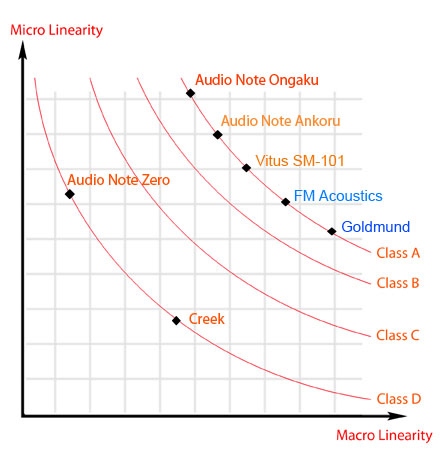فکر میکنم لازم باشه نوشته رومی رو در مورد کتاب Likhnitsky بیارم، ممکنه این کتاب توسط طراح Audio Note ترجمه بشه و توسط آقای فاطمی نماینده Audio Note در ایران در دسترس علاقه مندان قرار بگیره، منتظر چنین روزی هستم.
رومی توضیحاتی رو تو انجمنش داده که اینجا میتونید بخونید، من بخشی از متن رو اینجا آوردم :
A few year back a Russian audiologist A. Likhnitsky’s published a book “Sound Quality: New approach to testing of the home audio equipment”. (P&K, 1998) The book has many positive moments and altogether it was a wonderful attempt to bring into our listening audio evaluations and into the general audio practice some light of so necessary there objective rational and sanity.
Looking at the today’s audiophiles, I agree that the semantic and purposeless foolishness with which the audio people operate while they evaluate audio is staggering and the book makes an attempt to structure and to organize thinking about audio evolutions in a very civilized and very humanly-objective fashion. The book was written in Russian. Currently the book is experiencing a second attempt to be translated into English by the efforts of Peter Qvortrup (the Audio Note – UK guy), but knowing how much money/efforts he has commissioned to the project and knowing the intricacy of the Mr. Likhnitsky’s thinking/writing I do not anticipate that Peter will ever succeed. Therefore I presume that the western audiophiles will die in ignorance (just kidding) and will continue to call each other pathetically screaming: “I just bought that amplifier because the damn Patricia Barber was almost in my room!”
Actually, the audio people select audio gismos not just because their listening ignorance or their lack of audio-applied obective methodological ability. Mostly they are just victims and hostages of well-oiled machine of audio-moronisation, namely the Audio Propaganda, that deploys to audio people a set of faulty and totally irrelevant audio evaluation methods, audio objectives, audio critiques, and, weel as it offers to a target market a totally bogus, inner-brewed coordinate system of the audio thinking. It would be even OK if the audio propaganda does it’s bad thing intentionally but unfortunately it is not always the case. The audio propaganda’s composite consciousness itself is a victim of own actions and most of the power-players within audio propaganda are just regrettably feeble and disqualified people.
If you want to make a conclusion about the participants of the audio-power hoodlumhood then do not subscribe to their Internet masquerade or to their hypocritical writings. Meet them, talk with them “live”, sit in their rooms and get your own feeling of what you deal with. You will see how little is there, how afraid they are to maintain their own status-quo and how limited their understanding of what they deal with while they write their audio-doodles. You might be very surprised to meet your “favorite reviewer” and to learn how much idiocy, zombienisation, primitivism and ridiculousness s/he possesses, and particularly when audio is a subject. There is no wonder why most of the audio doodles that they spread around themselves are just the direct depictions of what they are, not to mention the numerous cases of an open untruthfulnees and perpetration of intentional fraud to pubic. I am not even taking about the frequent cases when the audio writers are the factual distributors of the products or the payrolled marketing departments. I am taking about the plan senselessness and stupidity that stuffed practically any audio publication. As an illustration I may recall the quite “popular and famous” reviewer who published a large drooling review about a multi-thousands dollars phonostage. The fun part is that he did not even have a turntable and therefore he used a reverse-RIAA filtered analog output of his SACD player to feed the phonostage. Well, now get the punch line: when I “gently” informed him that it was not a correct way to drive a phonostage the reviewer replied: “Why not, what would be the difference?” (nd the guy was damn serious!) Is anything else should be said? I would not even go into the fact that the most of the “industry sponsored audio judges” have no necessary cultural level, musical acquaintance and practicly no absolutely-required humane sensitivity in order to evaluate the methods and means of Music reproduction.
Anyhow, what Likhnitsky did with his book was an attempt to take the audio evaluations and audio judgments from the ignorant hands of a commonly moronic audio-oligarchy: manufacturers, dealers, reviewers, editors, audio-heaters and the rest residue of audio industry (not all of them but the dominating majority of them, approximately 80%) and give the correct audio-evaliation keys to wide public, and to help them, to the ordinary listeners, to become the owners of their hobby, their actions, their judgments, their listening ability and talents.
As I said, the book with more or less success (more frequently “more” then “less”) covers various aspects of audio evaluations. I suspect that the minor drawbacks and the too-simplified approaches that Mr.Likhnitsky did in his book were due to the fact that he targeted wide and mostly none-prepared addressees and therefore we was forced to go as simple and as easy as possible. The book is still mostly too complicated for an average audiophile audio-zombie.
Anyhow, I do not write a review on the book, but would like to embrace it and to offer a comparable vision to one of the strategic aspects of the Mr. Likhnitsky book. I refer to the book’s approach to stricture a listener’s progress into a played material. If to abridge everything tremendously then according to Likhnitsky a process of communicating with the musical messages is a multifaceted process and contains 4 hierarchical levels.
I will be paraphrasing:
At the first level of musical perception a listener deals with Sonic Accuracy: tonal balance, tonal purity, space resolution, sounds clarity, sounds distinctions, sounds details, voices separation, sounds characters, sounds connections, dynamic contrast, dynamic colorations and many others. Most of High End lives within this domain and most of playback systems introduce so much of “sonic contaminations” that any further musical perception remains locked out. In case of none-negative result from the first level and an absents of a sonic dissatisfaction in here a listener’s awareness has no impediments to go further to the second level.
The second level of musical perception has deal with tone and timber. This is much more complex quality related to neutrality, individuality, timber beauty, humanity, harmonization and many others ingredients of music. If a playback system does not screw up at the second level that a listener could fly further.
The third level is an emotional communication with music. At this level a listener deals with the capacity of a system to be transparent for emotional charge of music, musical energy, and the most important the correctness of emotional rendering. Most of the playbacks (if they ever reach this level!) introduce the emotional distortions but should a system still remains the emotionally transparent and “honest” to the source then a listener could go further (assumingly that the source-music has within itself something more then just the tonal and timber contents)
The last, forth level of musical perception, deals with esthetic content of music: the purposefulness of all elements of playback, the connectively of musical events, the meaningfulness of the messages and so on.
What Mr. Likhnitsky offered was very good and he illustrated the subject in his book quite well, offering many useful practical recommendation and examples. However, I consider his vision not exactly accurate, not particularly because it wrong (it is not) but because it is not inclusive and becose it portrays a slightly twisted picture.
Within this thread I will elaborate on my interpretation of the Likhnitsky’s visualization. I’m calling it “Six-Leveled-Listening Benefits”, as I have mentioned it in the description of my playback, (the emails with the questions that I’m receiving since I deployed the description made me to initiate this thread). The name “Six-Leveled-Listening Benefits” is totally irrelevant and actually it has not six levels but seven levels (more on it – later on). They are the gradual steps that listing awareness takes almost sequentially while we are trying to evaluate the elements of playback.
the Six-Leveled-Listening Benefits™ contains the stratification of the listening experiences within seven virtual levels.
The Six-Leveled-Listening Benefits (I will use SLLB from now) is a totally simulated representation according to which a listening perception identifies the result of a reproduced music listening. This structure could be productively used during evaluations of playback elements or the evaluations of the enter systems, as well as it provide a solid framework for audio semantics and practice. The SLLB is applicable not only within audio. Many of the SLLB’s elements are acting while we’re insisting “live” music well. I would intentionally omit some very minor SLLB alternation that would fit the SLLB model perfectly for “live” musicality and will concentrate explosively on the music reproduction – the audio world.
The Six-Leveled-Listening Benefits (SLLB) implies that our reaction to reproduced music might be explained within 7 boundaries. Those boundaries or levelers are:
1) Static perception
2) Dynamic perception
3) Emotional perception
4) Esthetic perception
5) Ethical perception
6) Re-Creative perception
7) Not Named Level
The first level of listening perception is Static Level. At this level a listener perceives musical information as a collection of the individual sounds and a listening awareness tries to evaluate the “convince-ability” of those sounds. At this level the evaluations of Sound is not necessarily related to the preceding or following sounds/event and instead of Sound a listener deals with an array of the secluded sounds/tones.
Certainly even the static sounds do have own dynamic/vibrant inner-life but it all included into a definition of Static Sounds at the First Level. Actually the best phrase to describe “it” would be not the Static Sounds but Disconnected or Isolated Sounds. The ketch in here that any vibrant or “animated” tone without a reference to “something else” is completely irrelevant and has no pointers to its values. The “isolated tone” has just an instant charge, a modal value, it frozen in time and space and it has no relation to anything else. Therefore I called it Static, meaning having no progressive formation.
A listener during his/her playback evaluations at the Static Level pays primary attention to pitches, sharpness, harmonic context, tonal and timber authenticity, neutrality, transient characteristics, granularity and many other properties of reproduced sounds. Interesting that a listener, in fact, do not care about a correctness (how it compare to the “live”) of the reproduced Sounds but rather s/he concerns if s/he does not get within reproduces Sound something else, namely the Alien Sounds. A listener is unable to recognize destroyed sounds but only the original sounds and “something else”. This “something else”, the added superstructure atop the original sounds, is a delta between the “correct” sounds and what a playback system presents to a listener (the distortions or aberrations). It is important to identify that those distortion/aberrations do not mix inside our consciousness with the “correct” sounds and they just perceived as a totally separate recognizable-effective entry. So, while evaluating a playback at the Static Level a listener do not search, recognize or analyze the “correct” sounds, as those “correct” sounds are entirely transparent, “consumption-free” and non-detectable by our awareness (at the Static Level but the have own value at the higher levels). What the listener’s awareness does is scanning the reproduced sound in search for those show-stopping Alien Sounds.
In the audio the primary contributors to Alien Sounds – the Static Level Detectable Differences are individual parts of the audio components, primary the passive parts. Each and single particle of audio signal (to name a few: resistors, capacitors, cables, magnetics, dielectrics, the spaces around the currents flow, electrical and mechanical signatures of active elements, contacts, diaphragms, suspensions and hundreds other contributors) do their contribution to the Sounds and do inject into Sound the Alien Amendments. The Amendments are the signatures of the mechanisms that invoked tem. As the result, we do not recognize the distortions themselves (in my vocabulary “distortions” are not the alternations of Sounds but an appendage of Sound with a residue of the linguistic manipulations) but we hear a language of the conversion processes that created the distortion, or according to the Beach Effect ™ the “language of a parallel process”.
Our listening awareness has an ability to filter out those amendments or to recognize them as the static, fixed amendments with a permanent delta. Sine the delta is acknowledged as delta, the listening awareness activates a static perceptional antidote, that sine it was called help to disregard the amendments or make their presents less influential. The effectiveness of the antidote is in direct dependence how the “language of a parallel process” differ from the language of Reality. If the languages use the similar linguistic algorithms then the effectiveness of the antidote is incredibly high and could completely compensate the presents of the Alien Sounds or the Amendments in Sound at the First Static Level. I have to note that some of the amendments at the Static Level have deep relationship with the amendments that take place at the Second, Dynamic Level (phase-related amendments) and the second-level amendments has way more powerful and more devastating affect to the listening awareness.
Well, if we have such a great ability to tune ourselves out from the Static Alien Sounds then what kind harm they could do? If to simplified everything tremendously and for a sake of illustration to compare our listing awareness with a computer then the awareness runs a multithreaded execution and the amount of cognizant force spent to run one thread take the juice (in case of a computer the processor time and a few other things) out of the parallel threads. Ironically our awareness acts almost similar and while we are filtering ourselves from the Alien Static Sounds we’re masking out (minimizing) our capacity to be deal (be concentrated) with the content of the original messages.
The audiophiles call the Static Level’s Alien Sounds as the Sonic Colorations. The Colorations from their point of view are the “correct” sounds presented via a prism of Distortions but it is very far form Truth as the natural, original Sound of Reality never mix with the Alien Sounds of a Linguistic of Reality Transformations. Sound and the Sounds are recognized by our awareness separately. The Static Tonal Colorations are practically irrelevant; they have as much unconditional values as the none-existing murky Absolute Tempo in music. Therefore if a person evaluates a playback only at the Static Level then the result is totally extraneous and the person let itself to be engaged into a perpetual chaise of the meaningless and semi-hallucinational Static Level sonic differences.
The contemporary so-called audiophile movement and the entire audio industry concentrated and fully dedicated to analyses, recognition and selling to public the Static Level sonic differences. The audiophiles subscribe to one or to another pattern of Alien Sounds and perpetually chase the patterns as a dog chase own tail. The audio industry well understand this, wonderful for them, marketing situation and deploy an army of the ignorant-heaters-writers, whose audio-awareness are able to operate primary at the First Static Level. Those reviewers, the marketing cheerleaders, continuously propose to the prospective audiophiles-consumers the “new remedies” or just the new psycho-virtual patterns of the Alien Sounds.
The industry operates quite simple: the most horrible audio element is and the more revolting pattern of the Alien Static Sounds it construct the less audio-intelligent person would be deployed to the “mission”. Any editor of audio publication knows how to mate a misery of a component (need to be “publicly evaluated”) with the personal audio-idiocy and ignorance of a prospective reviewer. The more horrible component get more loaded-with-Mormonism analyst-reviewer, and the “selected” reviewer uses his/her own “talents” to submit the poison-spreading-audio-gismo to public by building a necessary verbal wrap around a product. The consumers, with theirs consciousness operating at the First Static Level, mostly do not even buy into the different patterns at the Alien Static Sounds but they fish for a verbal marketing BS-wrapping around the Alien Static Sounds.
Based upon my experience and my unfortunate observation of those countless audiophiles, the so-called High-End audio has approximately 50% of its participants whose audio objectives concentrated explicitly at the First Static Level. I call them audio-zombies and they pretty much are a boring waste in audio. I have to note that there is no direct relation between the audio-zombies’ audio limitations and their general intellectual or spiritual competence. There is some indirect connection but to cover this subject is not the scope of my current application.
The next post will be covering the Second SLLB’s Level: the Dynamic Level.
The listening perception at Level #2- the Dynamic Level
Well, here is (if you “got” what meant in the article about the First Static Level) a loaded statement: if a listener did not “hear” (acknowledged audio wise) anything at the First Level then the Second Dynamic Level takes it’s turn. The loaded is there was the part “did not hear anything”. Whatever was audio-heard (positive or negative at the First Static Level) was in fact bad. If a listener was audio-wise “unconvinced “ or “impressed” during perceiving Sound at First Level then it means that a playback did something very wrong. Once again: the best possible outcome from the First Level is not hearing any result. BTW, those thousands and thousands pages with the descriptions of what was auditioned from the playbacks written by the industry reviewers who primary operate at the First Listening Level is an indicative evidence now horribly audio performs in the reviewer’s rooms…
The second level of listening perception is a Dynamic Level. This Level includes two sublevels that deal with totally different properties and form my perspective should be evaluated (acknowledged) differently. I intentionally combined those two sublevels into one Dynamic Level: it simplifies the stratification and helps to emphasize that that the sublevels are fundamentally dissimilar form the First Static level.
The Dynamic Sublevel “A” is a Dynamic External Level. At this level a listener perceives musical information as an arranged sequence of pitches inherited form the First Level and the listener’s awareness recognizes the heard not as the binary succession but as a continues variations of tonal influences.
The Dynamic Sublevel “B” is a Dynamic Internal Level. At this level a listener does not deal directly with the sounds from the First Level but deals with the inner-managerial characteristics of sound reproduction. The Level “B” is a metadata, a structure, a template for the Level “A”.
The next post will look a slightly deeper at what sonic properties are essential and what should be paid attention at the each SubLevel (“A” and “B”) of the Dynamic Level #2
Read More
